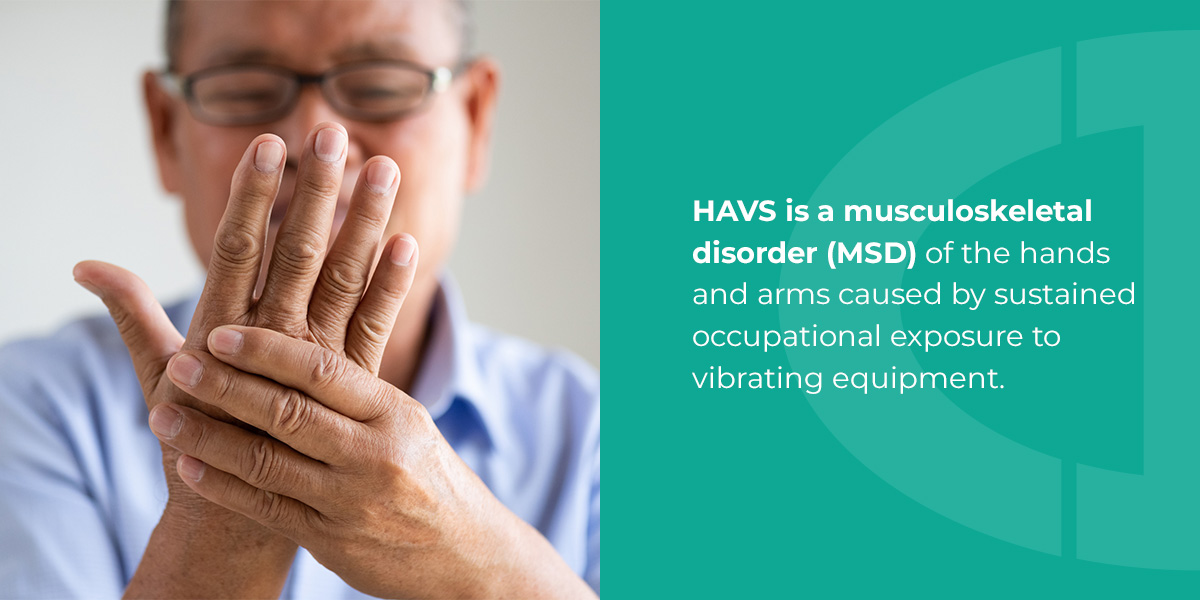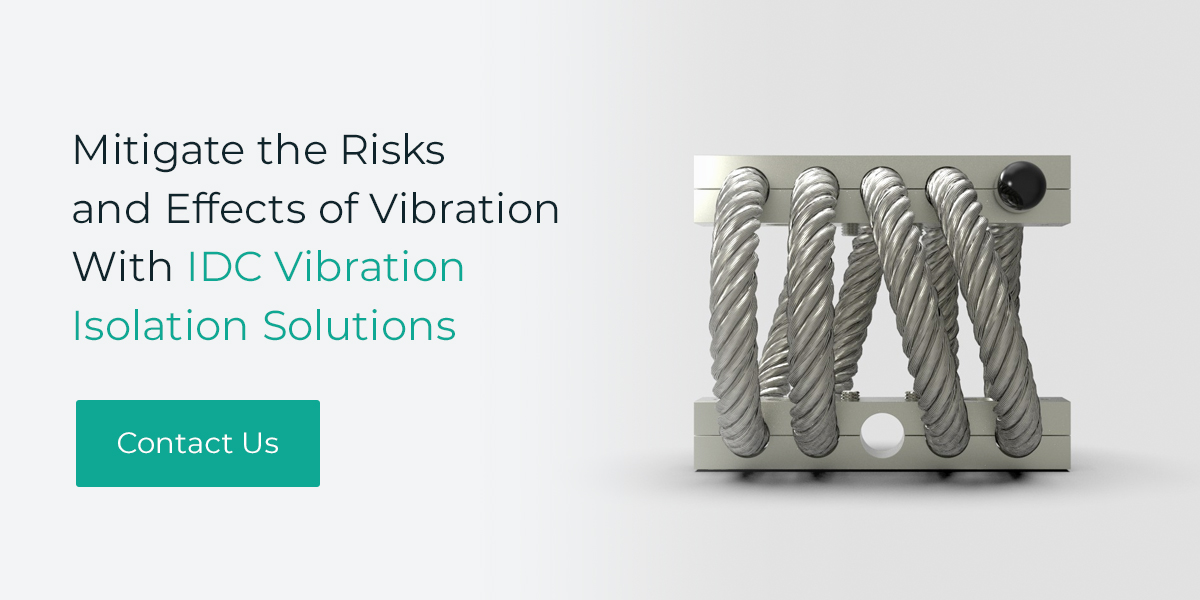Effects of Vibration on the Human Body

Effects of Vibration on the Body
Consider all the different types of vibration you encounter on a daily basis. You might use a vibrating massage gun to work out muscle cramps, or you might use an electric grinder to grind your coffee beans. If you work in a particularly demanding field, such as the military, construction or transportation, you might work with intense vibration on a daily basis.
While a vibrating massage chair at the mall can be pleasant and even beneficial, prolonged exposure to high-frequency vibration can harm the body and cause lasting health conditions. This post will explain the harm vibration can cause humans and how you can mitigate these risks.
Vibration and Its Effect on the Human Body
There are many physical risks of exposure to vibration. Vibration-induced conditions can develop over a few months or a few years based on a few factors, including:
- The intensity of the vibrations.
- The duration and frequency of exposure.
- An individual’s sensitivity to vibration.
Usually, these conditions begin as feelings of pain that intensify over time. There’s an individualized aspect to vibration-induced disorders, as each person’s body responds to vibration differently. The severity of the disorder is dependent on:
- Threshold value: This is the highest vibration level most healthy individuals can withstand on a daily basis without experiencing adverse effects.
- Latent period: This is the time between exposure and the initial appearance of symptoms. The latent period may vary depending on the intensity and duration of the exposure.
- Dose-response relationship: This is the relationship between symptom severity and the amount or frequency of exposure.
There are two types of vibration that can cause health issues — hand-arm vibration and whole-body vibration.
What Is Hand-Arm Vibration?
The phrase hand-arm vibration refers to the mechanical vibrations affecting the hands and arms of equipment operators. This phenomenon typically affects workers in physically demanding industries, such as construction and oil and gas.
Hand-arm vibration syndrome (HAVS) is a cluster of vascular and neurological symptoms that result from prolonged exposure to intense vibration. Although symptoms may be undetectable for months or even years, taking preventive measures like providing workers with the proper personal protective equipment (PPE) can significantly reduce the risk of developing the syndrome.
What Causes Hand-Arm Vibration?
The primary cause of hand-arm vibration is handheld vibrating tools, such as jackhammers, chainsaws and power drills. Anyone who regularly uses handheld equipment for long periods of time is at risk of exposure to intense hand-arm vibration, which can develop into hand-arm vibration syndrome (HAVS).
Although it’s unclear exactly how vibration leads to HAVS, the dominant theory is that it causes repeated small injuries to the blood vessels and nerves in the hands. Some factors that can influence the effects of hand-arm vibration include:
- Acceleration and frequency of vibration.
- Tool maintenance.
- Duration and frequency of exposure.
- How hard a worker grips the equipment.
- Workpiece hardness.
- Handle texture and softness.
- Hand and arm positioning.
- Individual susceptibility to vibration.
- History of smoking or drug use.
- Medical history of hand or finger injuries.
- A worker’s level of skill and control over the equipment.
Education on proper equipment use and maintenance can help you prevent your staff from developing HAVS.
What Are the Symptoms and Effects of Hand-Arm Vibration Syndrome?

HAVS is a musculoskeletal disorder (MSD) of the hands and arms caused by sustained occupational exposure to vibrating equipment. One of the most common symptoms of HAVS is vibration-induced white finger (VWF), which is a form of Raynaud’s Phenomenon. Individuals with VWF experience the following symptoms as a result of nerve and blood vessel damage:
- Whitening (“blanching”) in the fingers of one or both hands.
- Coldness or pain in the fingers between episodes.
Exposure to the cold is the main trigger for VWF attacks, during which one or more fingers whiten in response to the cold. Someone suffering from VWF may also experience feelings of cold and pain in their hands between episodes.
Other signs of HAVS typically include:
- A tingling feeling or loss of sensation in the fingers.
- Bone cyst development in fingers and wrists.
- Loss of light touch.
- Reduced grip strength.
The Stockholm Workshop Scale (SWS) is a common method for classifying the stages of HAVS. The system uses a patient’s subjective history to determine the condition’s severity, placing the patient in one of four stages:
- Stage 1 (Mild): The patient experiences occasional attacks that affect only the tips of one or more fingers.
- Stage 2 (Moderate): The patent experiences occasional attacks extending beyond the tips of one or more fingers.
- Stage 3 (Severe): The patient experiences frequent attacks affecting entire fingers.
- Stage 4 (Very severe): The patient experiences all of the symptoms of stage three in addition to abnormal skin changes or tissue damage in the fingertips.
What Is Whole-Body Vibration?
Whole-body vibration refers to occupational vibration that affects the entire body rather than only the hands and arms. The combination of high-frequency vibration with shifts lasting eight to 10 hours can cause severe bodily damage.
This vibration is transmitted from a machine’s seat through the operator’s feet, legs and buttocks to every tissue, organ and system within the body. Those most at risk of developing whole-body vibration system include:
- Construction workers.
- Military vehicle drivers.
- Heavy equipment operators.
Encouraging proper machine use and preventive maintenance can help reduce the risks involved with operating vibrating power equipment.
What Are the Symptoms and Effects of Whole-Body Vibration?
Like with HAVS, sustained exposure to intense whole-body vibration can cause serious health conditions. Some of these conditions can even lead to lifelong disabilities.
Whole-body vibration, in combination with poor posture and dietary habits, can lead to the following symptoms:
- Chronic back and neck pain.
- Nerve damage.
- Reduced motor skills.
- Temporary or permanent loss of sensation in hands and feet.
- Loss of balance or coordination.
- Impaired perception.
- Chronic fatigue or muscle weakness.
- Respiratory disorders.
Vibration Mitigation Solutions from IDC
IDC provides a wide array of vibration mitigation solutions across all industries. Additionally, we specialize in tailor-made designs to meet your specific wire rope isolator requirements. Here are some of our top-selling wire rope isolation products:
- M-Series: Our M-Series wire rope isolators are crafted from robust, fail-safe materials, offering a versatile and economical solution for mitigating vibrations.
- SB-Series: Our SB-Series wire rope isolators are designed with a compact structure and shorter bars, ideal for applications in limited spaces.
- SM-Series: Our SM-Series wire rope isolators feature an innovative S-shaped design that ensures exceptional support, balance, and vertical stability.
- XM-Series: Our XM-Series wire rope isolators are designed with a symmetrical X-shape, offering vertical strength and torsional resistance ideal for lighter loads.
Mitigate the Risks and Effects of Vibration With IDC Vibration Isolation Solutions
Prevention is essential when it comes to the health risks of vibration. According to OSHA, some ways to mitigate vibration exposure hazards include:
- Following a preventive maintenance regimen to keep vibrating equipment in peak operating condition.
- Allowing operators to switch between vibrating and non-vibrating tools.
- Providing operators with frequent breaks of about 10 to 15 minutes.
- Training staff on the risks of vibration to the body and best practices for limiting exposure.
- Advising all operators to keep their hands dry during operation and to use a light grip.
- Using damping pads or vibration isolators on equipment.
Vibration isolators soften and damp vibrations in moving systems to keep operators safe from health conditions such as HAVS and whole-body vibration syndrome. Browse our selection of wire-rope isolators to learn more about our products or contact one of our experts for guidance. We’ll help you create the best solution for your organization.
Speak with a Sales Representative
Our representatives have a wealth of knowledge on all our products – let them steer you in the right direction.
Learn More



